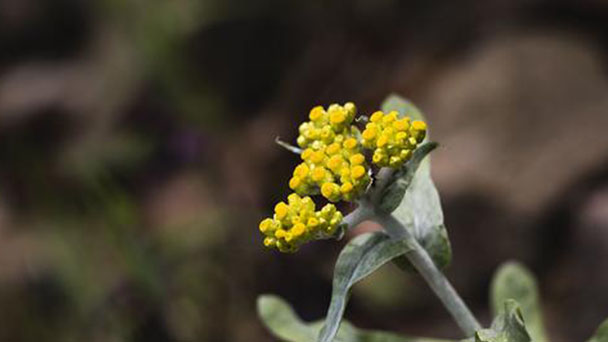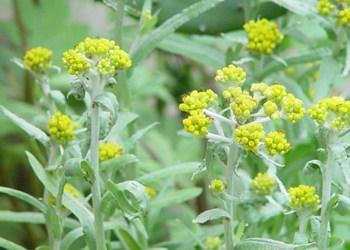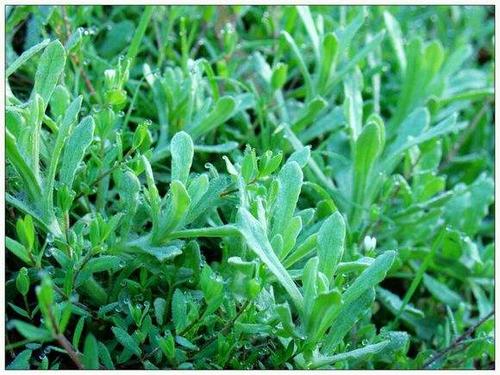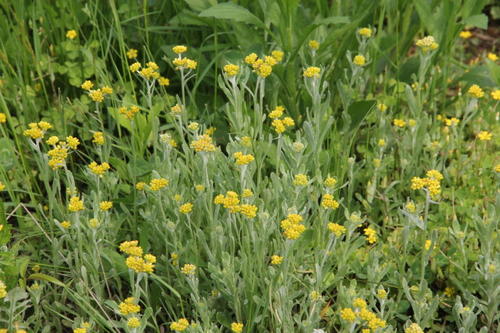Gnaphalium affine profile
Written by Maggie
Mar 10 2021

Gnaphalium affine is an annual herb in the genus Asteraceae and Asteraceae in the genus Asteraceae. Gnaphalium affine stems are erect or basal branches oblique ascending lower, 10-40 cm or more tall, basal diameter ca. 3 mm, distally unbranched, furrowed, covered with white thick cotton hairs, internodes 8-20 mm long, upper internodes rarely up to 5 cm. Leaves are sessile, spoon-shaped oblanceolate or ovate-shaped spoon-shaped, stem and leaves used as medicine, for relieving cough, expectorant, asthma and bronchitis, as well as non-infectious ulcers, trauma of common medicine, internal administration and blood pressure lowering effect.
Gnaphalium affine picture

Morphological characteristics of Gnaphalium affine
Stems
Gnaphalium affine is an annual herb. Stems are erect or basal branches oblique ascending lower, 10-40 cm or more tall, basal diameter ca. 3 mm, distally unbranched, furrowed, covered with white thick cotton hairs, internodes 8-20 mm long, upper internodes rarely up to 5 cm.
Leaf
Leaves of Gnaphalium affine are sessile, spatulate oblanceolate or ovate-spatulate, 5 -- 7 cm long and 11 -- 14 mm wide, upper leaves 15 -- 20 mm long and 2 -- 5 mm wide, tapered at base, slightly descending, rounded at apex, spiked, white woolly on both surfaces, often thinner above, veins 1, inconspicuous below.
Flowers
Gnaphalium affine is more or less capitulate, 2 -- 3 mm in diameter, subsessile, clustered into corymbs at branch tips, yellow to pale yellow flowers;Involucre campanulate, ca. 2-3 mm in diameter;Involucral bracts 2-3 layers, golden or lemon yellow, membranous, lustrous, outer obovate or spatulate, abaxial surface basally covered with cotton, apex rounded, base tapered, ca. 2 mm, inner spatulate, abaxial surface usually glabrous, apex obtuse, 2.5 -- 3 mm long; Receptacle of gnaphalium affine is slightly concave in center, glabrous. Female flowers are numerous, corolla slender tubular, ca. 2 mm, apex dilated, 3-dentate, lobes glabrous. Bisexual flowers are less, tubular, ca. 3 mm long, gradually expanding upward, eaves 5-lobed, lobes triangular-acuminate, glabrous.
Fruit
Achene of Gnaphalium affine obovate or obovate-cylindrical, ca. 0.5 mm long, papillary. Crest is coarse, smudgy white, easy to fall off, ca. 1.5 mm long, base united into 2 bundles.
Ecological habits of the Gnaphalium affine
Gnaphalium affine is found on dry or wet grasslands at low elevations, especially in rice paddies.

The distribution region of Gnaphalium affine
Gnaphalium affine is produced in Taiwan, East China, South China, Central China, North China, Northwest and Southwest China.
Gnaphalium affine is also found in Japan, Korea, the Philippines, Indonesia, Indochina, and India.
Gnaphalium affine uses
Medicinal value
The stem and leaves of Gnaphalium affine are used as medicine for relieving cough, removing phlegm, treating asthma and bronchitis, as well as non-infectious ulcers and wounds.
Ediable value
Gnaphalium affine is a kind of food favored by the people of Luzhou, Qiandong and Xiangxi Autonomous Prefecture of Hunan Province. It is made of wormwood rice, also known as flour rice, Qingming rice, cotton rice and soft bird rice, wrapped with glutinous rice and sticky rice.

Latest Updated
- Benefits of Bugleweed - 7 Science-backed Health Benefits
- Bugleweed Dangers & Side Effects - Is It Poisonous?
- How to Plant Evergreen Trees - What You Should Know
- When to Plant Evergreens - Grow Guide for Evergreen Trees
- 12 Wonderful Evergreen Shrubs for Your Garden
- 12 Popular Evergreen Plants with Pictures for Beginners
- When And How To Prune A Lilac Bush Like a Pro
- How to Grow & Care for Lilac Vine (Hardenbergia Violacea)
- Japanese Lilac Tree (Syringa Reticulata) Care & Propagation Guide
- Shumard Oak Pros and Cons - What to Know
Popular Articles
- Winter maintenance of Antirrhinum Majus
- How to Grow Terminalia Mantaly Tree
- How to Grow and Care for Crossostephium Chinense
- How to grow Antirrhinum Majus in spring
- Peristeria Elata (Dove Orchid) Profile: Info & Care Guide
- Underwatered Snake Plant (Sansevieria Trifasciata) - Signs And How To Fix
- How to Care for Brazilian Jasmine Plant (Mandevilla Sanderi)
- How to Grow & Care for Graptopetalum Purple Delight in Summer
- Rosa Chinensis (China Rose): Plant Growing & Care Tips
- How to Care for Baby Sun Rose (Aptenia Cordifolia)